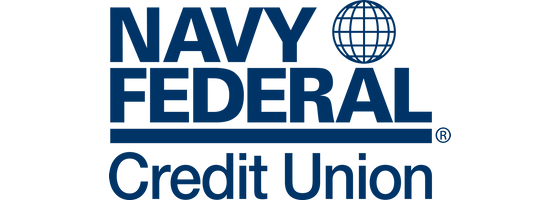- Repayment terms from two to seven years.
- Loans can be funded as quickly as one business day.
- Secured or unsecured loan options.
Best Joint Personal Loans in December 2024

Our evaluations and opinions are not influenced by our advertising relationships, but we may earn a commission from our partners’ links. This content is created by TIME Stamped, under TIME’s direction and produced in accordance with TIME’s editorial guidelines and overseen by TIME’s editorial staff. Learn more about it.
A joint personal loan is an installment debt taken out with another qualified borrower. These loans can be used for various purposes, whether you need to cover an unexpected emergency expense, want to make a large purchase, are planning a home renovation project, or choose to consolidate credit card debt.
Joint personal loans come with many of the same terms and requirements as individual personal loans. Here’s a look at what these loans entail and which lenders offer the best terms.
Joint loans through Upgrade offer borrowers up to $50,000 in as little as a day. Loan repayment terms range from 24 to 84 months, and depending on your needs, credit score, and available collateral, there are both unsecured and secured loan options.
While lower-end interest rates are very competitive, Upgrade’s higher-end rates can be as costly as a credit card in some cases. Origination fees also apply to personal loans and can be as much as 9.99% of the loan amount.
While you can get a loan funded in just a day, you may also find yourself waiting for up to two weeks if you use the loan to consolidate debt and want funds sent to an existing creditor.
If you need quick funding, OneMain Financial is hard to beat. Eligible borrowers can access money in as little as an hour after approval, with unsecured and secured personal loan options available. You can apply and prequalify online without affecting your credit.
Loan options through OneMain Financial are a bit limited, with loan amounts ranging from $1,500 to $20,000 and loan terms maxing out at 60 months. Interest rates are also on the higher end and start at 18.00%. All loans have origination fees, which may be a flat rate of up to $500 or a percentage ranging from 1% to 10% of the total loan amount.
PenFed offers personal loans of up to $50,000 to individual or joint borrowers with credit scores as low as 580. Interest rates are very competitive and start at just 7.99%, with no origination or loan fees. You can also get preapproved online without affecting your credit.
Loans are only available to PenFed members, so you must become a credit union member to qualify. You’ll also be limited to loan repayment terms of five years or less, and it can be hard to find loan information online before you begin the application process.
If you need to borrow a lot of money, LightStream may be the right choice for you. Joint and single borrowers can take out a personal loan for up to $100,000 with no origination fees, and you can choose a repayment term from 24 to 144 months in length.
Borrowers are expected to have a good credit score or better (a FICO score of 670 or higher or a VantageScore of 660 or higher), and there is an option to get preapproved for a loan online without it impacting your credit. LightStream isn’t intended for small loan requests, as $5,000 is the minimum amount you can borrow.
LendingClub allows you to shop around and compare offers from multiple partner lenders at once, choosing the loan terms that work best for you. Through LendingClub, customers with a credit score of 600 or higher can borrow up to $40,000 with an online preapproval process that won’t affect their credit.
There are origination fees of up to 8.00% on LendingClub loans, and repayment terms only range from three to five years in length. Depending on the lender and loan offer you choose, you may also find that funding takes a bit longer than with other lenders.
Personal loan fees can mean hundreds or even thousands of extra dollars out of your pocket. U.S. Bank personal loans have no origination fees or prepayment penalties, potentially saving you as much as 10% of your loan amount compared with some of the other lenders noted here.
For existing U.S. Bank customers, loans are available from $1,000 to $50,000, with 12 to 84 months repayment terms. If you aren’t already a U.S. Bank customer, however, you’ll be limited to borrowing up to $25,000 for as many as 60 months. The best interest rates are reserved for borrowers with 800 credit scores or higher.
Navy Federal Credit Union is a member-based organization offering secured and unsecured personal loans to joint and individual borrowers. When opting for a secured loan, you can use a savings account or CD balance to secure the loan and borrow up to 100% of your liquid balance at your existing return rate plus 2%. Depending on the repayment term you choose, you may be subject to a minimum loan amount.
If you prefer an unsecured joint loan, Navy Federal has those too. Loan repayment terms and interest rates vary according to the loan’s purpose; home improvement loans may offer a longer repayment period than a personal use loan, for instance. Unfortunately, Navy Federal loans are only available to members.
| Title | APR | Loan amount | Min. credit score |
|---|---|---|---|
Upgrade | 8.49% to 35.99% | $1,000 to $50,000 | N/A |
OneMain Financial | 18.00% to 35.99% | $1,500 to $20,000 | N/A |
PenFed Credit Union | 7.99% to 17.99% | Up to $50,000 | 580 |
LightStream | 6.99% to 25.49%; 0.50% discount with autopay | $5,000 to $100,000 | Good to excellent |
LendingClub | 8.98% to 35.99% | $1,000 to $40,000 | 600 |
U.S. Bank | 8.74% to 24.99% | $1,000 to $50,000 | N/A |
Navy Federal Credit Union | Existing rate plus 2% | Based on collateral | No minimum |
In order to choose the best joint personal loans and lenders, we looked at a range of qualifying factors for each product. This meant comparing and analyzing interest rates, loan repayment terms, availability, ease of application, funding speed, fees, and loan limits. We also considered whether each lender had income and/or credit score minimum requirements that might keep borrowers from qualifying.
Not sure which joint personal loan is right for you? Here are some questions to ask yourself first.
Some lenders fund as quickly as a few hours after approval, while others might take days (or even weeks) to send your loan funds. The right lender for you can depend on why you need your loan and how quickly you require access to that money.
Personal loans come with costs, ranging from the interest rate you’re given on the debt to origination fees, prepayment penalties, and more. You can find lenders that don’t charge origination fees, but you won’t be able to escape interest charges, so it’s wise to shop around a bit until you find the lowest possible rate.
Online preapproval isn’t offered by every lender, but it can make the loan comparison process much smoother. Getting pre-approved can tell what loans you qualify for and the terms you’ll likely be offered without affecting your credit. This lets you clearly compare your loan options before you proceed with borrowing money.
In order to take out a joint personal loan, you and your co-borrower will first need to qualify. This means meeting each lender’s specific eligibility requirements.
Many lenders have a minimum credit score requirement in order to qualify for a personal loan, especially when the loan is unsecured. By adding a creditworthy co-borrower, you better your chances of qualifying. Some lenders don’t have a minimum credit score limit but will require you to have either no credit history or a positive credit history (if it’s limited).
Lenders will want to ensure you can afford to make your monthly loan payments, so they may have minimum income requirements. If you are applying for a joint loan, your and your co-borrower’s income may be considered together, helping you qualify more easily.
Not all lenders offer loans in all states. Be sure to choose a lender that operates in your state and offers the type of loan you want in that area.
A joint personal loan isn’t for everyone, and adding another borrower to a shared debt can come with risk. Instead, here are some alternatives to also consider.
A joint loan is one that’s taken out with a co-borrower with both equally responsible for the loan’s repayment. An individual loan is only taken out by one borrower, who is the sole person responsible for repaying the debt. If you’re concerned about on-time payments or other factors and are able to qualify for a loan on your own, taking out an individual loan instead of a joint loan may be a better option.
Credit cards are an option if you need to cover an unexpected expense or a large purchase. They provide faster access to funds than even the quickest personal loans and may offer rewards (such as points and cash back) that personal loans cannot.
If you have a credit card with a 0% annual percentage rate (APR) offer on purchases or balance transfers, you may even be able to combine balances or make large purchases and then pay them off over time without incurring any finance charges.
If you have equity in your primary residence, you might be able to utilize a home equity loan or home equity line of credit (HELOC). Home equity debt is secured by collateral (your home’s equity), which means lower interest rates. However, the set-up costs can be steep.
A joint personal loan is a form of unsecured or secured debt taken out with another individual. These installment loans provide borrowers with lump-sum funds that they repay monthly for a predetermined period of time at a fixed or sometimes variable interest rate. When a personal loan is taken out jointly, both borrowers are equally responsible for repaying the debt according to the agreed terms.
Each lender has its own loan requirements and application process, which, in many cases, may be completed online. You will need to provide the lender with details such as your name, contact info, income, Social Security number, and household expenses. You may also need to provide proof of income and employment in order to qualify.
Once approved, you’ll need to accept the lender’s loan terms and sign a promissory note agreeing to repay the debt as scheduled. You can then provide the lender with your preferred funding method (mailing address, bank account information, etc.) to receive your loan funds.
Taking out a personal loan with another borrower can make it easier to qualify for the loan you need with the terms you want most. While this does mean sharing the obligation for the debt with another person—which can be a bit risky—it also opens the door to larger loans, better rates, and higher odds of approval, depending on creditworthiness.
Yes, they can. However, when they do, they share responsibility for the debt. Both borrowers must repay the joint loan, and all loan activity is reported to the three main credit bureaus.
A married couple can take out a joint personal loan together, co-borrowing the debt and agreeing to share the responsibility of repayment equally. How the couple chooses to use the funds is up to them, but both individuals are on the hook for repaying the debt as agreed.
Joint loans can be taken out by couples, married or unmarried, allowing them to borrow money as needed while sharing the responsibility of repayment equally. Borrowers can also take out a joint loan with a sibling, parent, friend, or other willing and creditworthy co-borrower.
A joint loan may make it easier to qualify for a loan or to get higher loan limits, lower interest rates, and better repayment terms. This is especially true if one borrower has a limited or poor credit history, low income, or high debt-to-income (DTI) ratio.
The information presented here is created by TIME Stamped and overseen by TIME editorial staff. To learn more, see our About Us page.










